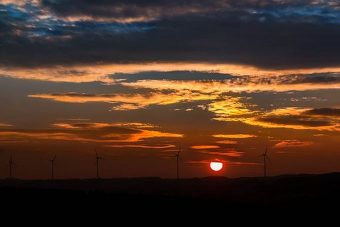
The solar, wind and energy efficiency industries already employ millions of people in the U.S. and they’re poised to grow.
According to the U.S. Department of Energy, there are 374,000 American jobs in solar energy, 102,000 in wind energy and more than 2.2 million related to energy efficiency. For comparison, 160,000 Americans work in coal, 360,000 in natural gas and 515,000 in oil.
Solar and wind are among the most dynamic industries in the nation. In 2016, solar employment expanded 17 times faster than the overall economy. Wind turbine technicians are expected to be the fastest-growing occupation over the next 10 years.
America’s clean energy jobs are spread out far and wide. Below, see if you can find your state in the top 10 for solar, wind and energy efficiency employment.
Texas is the top state for wind jobs and California is the top state for solar and energy efficiency jobs. Florida, Illinois, Massachusetts, Michigan, New York, North Carolina and Ohio also rank in the top 10 in multiple categories.
Of course, it’s easier for Texas and California to be at the top of the list because they have such large populations. But what about the concentration of clean energy jobs as a proportion of total state employment?
Looking at employment on a per capita basis, North Dakota and South Dakota somewhat surprisingly come out on top for wind. About 4.3 out of every 1,000 jobs in North Dakota are in wind energy, as are 3.6 of every 1,000 in South Dakota. On solar, California still leads the pack even on a per capita basis, with solar accounting for 9.3 out of every 1,000 jobs. Nevada is a close second, with 8.9 out of every 1,000 jobs in solar energy. For energy efficiency, the leading states are Vermont (35.8 out of every 1,000 jobs) and Delaware (28.5 out of every 1,000 jobs).
It’s not just in electricity, either. The share of the auto industry working with alternative fuels and fuel-efficient vehicles is growing as well. Of the 2.4 million workers in the industry in early 2016, more than 259,000 worked with alternative-fuel vehicles (including natural gas, hybrids, plug-in hybrids, all electric and hydrogen fuel cell vehicles) and at least 710,000 workers were focused on improving fuel economy or transitioning to alternative fuels.
It’s clear that clean energy is driving job growth across the U.S. creating new economic opportunities and cutting across party lines. The question now is: Will the clean energy revolution continue under the Trump administration?
Source: ecowatch.com



